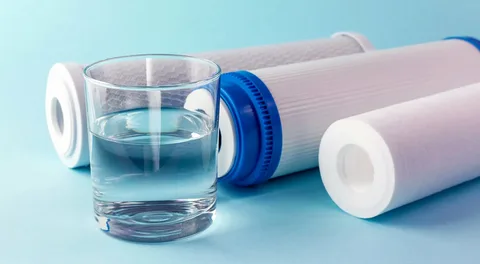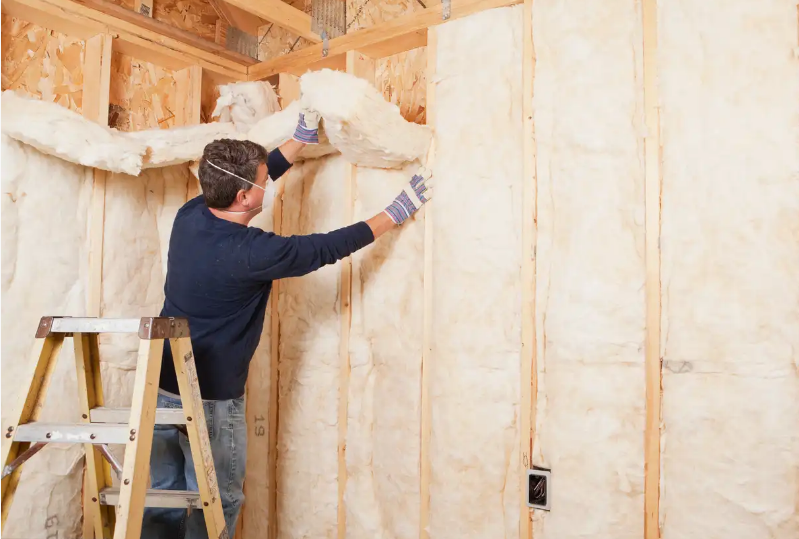When it comes to something as essential as water, quality should never be compromised. With an overwhelming array of available options, choosing the right water purifier filter for your home can feel like navigating a maze with no exit. Are you unsure whether to opt for a pitcher filter or a reverse osmosis system? Do you know what contaminants lurk in your tap water? Fear not! In this ultimate guide, we’ll explain everything you need to know about selecting the perfect water filter purifier tailored to your unique needs. Say goodbye to guesswork and hello to cleaner, safer drinking water—your hydration journey starts here!
Introduction to the importance of clean water
Clean water is essential for a healthy lifestyle. Yet, many people underestimate its significance. Contaminated water can lead to various health issues, from gastrointestinal problems to long-term chronic diseases. With the growing concerns over pollutants and impurities in our tap water, investing in a reliable water filter purifier has never been more critical.
Imagine pouring yourself a refreshing glass of water, knowing it’s free from harmful chemicals and contaminants. The peace of mind that comes with clean drinking water is priceless. But how do you choose the right purifier for your home? There are so many options available that it can feel overwhelming.
This guide will explain everything you need to know about selecting the perfect water filter purifier for your needs. Whether you’re concerned about specific contaminants or want better-tasting tap water, we’ll help simplify the process. Let’s dive into the world of water purification!
Understanding different types of water filter purifiers
Water is a crucial element for our survival and well-being, but unfortunately, not all water sources are safe for consumption. This is where water filter purifiers come in – they are designed to remove impurities from water and make it safe for drinking. However, choosing the right water filter purifier can be overwhelming with the wide variety of options available today. This section will discuss the different types of water filter purifiers to help you understand their features and determine which one best suits your needs.
1.Carbon Filters
Also known as activated carbon filters, these are one of the most common types of water filters used in households. They use a porous material like charcoal to trap impurities such as sediments, chlorine, and some chemicals through adsorption. The result is clean and better-tasting water.
2. Reverse Osmosis (RO) Systems
These systems use a multi-stage filtration process that involves forcing water through a semi-permeable membrane to remove contaminants, including bacteria, viruses, dissolved solids like lead and arsenic, and other harmful substances.
3. UV Filters
Ultraviolet (UV) filters use ultraviolet light to destroy microorganisms present in water by disrupting their DNA structure. These filters do not remove any physical impurities but are highly effective against biological contaminants.
4. Distillers
Distillation involves boiling contaminated water until it turns into steam, which is then collected as a purified liquid in another container. This process leaves behind impurities such as bacteria and heavy metals that have higher boiling points than water.
5. Adsorption Filters
Similar to carbon filters, adsorption filters also use activated carbon or other materials like zeolite or silica gel to attract and trap impurities from the water passing through them.
6. Ozone Water Purifiers
Ozone is a powerful oxidizing agent that kills bacteria and removes organic compounds from the water by breaking them down into smaller molecules.
Weighing the pros and cons of each type
When choosing a water filter purifier, understanding the pros and cons of each type is essential. Reverse osmosis systems are highly effective at removing contaminants. They provide clean drinking water but can waste some water in the process. This might not be ideal if you’re conscious about conservation.
Activated carbon filters excel at improving taste and odour. They’re affordable and easy to maintain, yet they don’t remove all impurities—heavy metals may still linger. UV purifiers effectively kill bacteria and viruses by using ultraviolet light. However, they require electricity, which could be inconvenient during outages.
Ceramic filters are durable and practical for removing bacteria without chemicals. However, their flow rate can be slow compared to other options. Each method has strengths and weaknesses. Understanding these nuances can help you make an informed choice tailored to your needs.
Factors to consider when choosing a Water Filter Machine
Choosing the right water filter machine requires careful consideration of several factors. Start with your water source. Is it municipal or well water? Each type can have different contaminants, influencing which filter is most effective.
Next, consider your budget. Water filters are available in a wide price range. Determine how much you will spend upfront and consider long-term costs like replacement filters and maintenance. Maintenance is another critical aspect. Some systems require frequent changes of filters or other components, while others are more hands-off. Assess how much time you’re willing to invest in upkeep.
Lastly, consider the space available for installation. Compact designs suit smaller kitchens better than bulky systems requiring extensive plumbing work. Evaluating these factors will guide you toward a suitable choice for your household needs.
Reviews from customers and experts
Customer reviews offer a wealth of insights into the effectiveness of various water filter purifiers. Many users praise systems for their ability to improve taste and clarity. A common theme among satisfied customers is the noticeable difference between tap and filtered water.
Experts also discuss these devices, often highlighting specific features that enhance performance. For example, some professionals recommend reverse osmosis systems for those concerned about contaminants like lead or chlorine.
However, not all feedback is positive. Some users express frustration with maintenance costs or complicated installation processes. Others mention issues with filters needing frequent replacements. Both customer opinions and expert filtered water lacksprovide essential guidance when choosing a purifier. They reveal real-world experiences that can help you make an informed decision tailored to your needs.
Step-by-step guide on how to install and maintain a house water filter
Installing a house water filter is simpler. Gather your tools: a wrench, screwdriver, and Teflon tape are essential. Begin with the main water supply. Please turn it off to prevent any spills during installation. Next, attach the faucet adapter if you’re using a countertop model. Make sure it’s secure, but avoid over-tightening.
For under-sink filters, remove the existing faucet and install the new one as per the manufacturer’s instructions. Attach the filter unit below your sink and connect it to your cold water line and drainage pipe.
Maintenance involves regular checks every few months. Cartridges should be replaced according to guidelines; many systems have indicator lights for this purpose. Occasionally, clean exterior surfaces with a mild cleaner to keep everything looking fresh. Lastly, routinely test your water quality for peace of mind regarding its purity!
Addressing common misconceptions about water filter purifiers
Many people believe that all water filter purifiers remove the same contaminants. This isn’t true. Each type has its strengths and weaknesses, targeting specific impurities.
Another common misconception is that water filters are only needed in rural areas or places with poor municipal water systems. However, city tap water can also contain harmful substances like chlorine and heavy metals.
Some assume that installing a filter is complicated and requires professional help. In reality, many models are user-friendly and designed for easy installation without special tools. You might hear concerns about the high cost of maintenance. While some filters need regular changes, others offer long-lasting options that can save you money in the long run.
Lastly, there’s a myth suggesting filtered water lacks essential minerals. Most quality filters retain beneficial minerals while eliminating harmful ones—ensuring great taste without compromising health benefits.
Conclusion
Investing in a quality water purifier filter is essential for safeguarding your health and enhancing your overall well-being. Clean water is not just a luxury; it’s a necessity that affects every aspect of our lives, from hydration to cooking. With various types of purifiers available, understanding their functions helps you make an informed choice tailored to your needs. Considering factors such as your water source, budget constraints, and maintenance requirements can lead you to the perfect solution for clean drinking water at home.
FAQs
Q: How often should I change the water purifier filter?
A: The frequency of changing your water filter purifier depends on various factors, such as the type of filter, quality of water, and usage. Generally, replacing the filters every 3-6 months is recommended for optimal performance. However, some advanced filters may last up to a year or more.
Q: What are the different types of water filter purifiers available in the market?
A: Several types of water filter purifiers are available, each with its own unique features and filtration methods. Some popular options include activated carbon filters, reverse osmosis systems, UV filters, and distillers. Understanding your specific needs and researching thoroughly before choosing the right type for your home is essential.
Q: Do I need to hire a professional for installation?
A: It is always recommended that you seek professional help installing a water filter purifier system. This ensures proper installation and functionality while also preventing any potential damage that may occur from incorrect installation.



